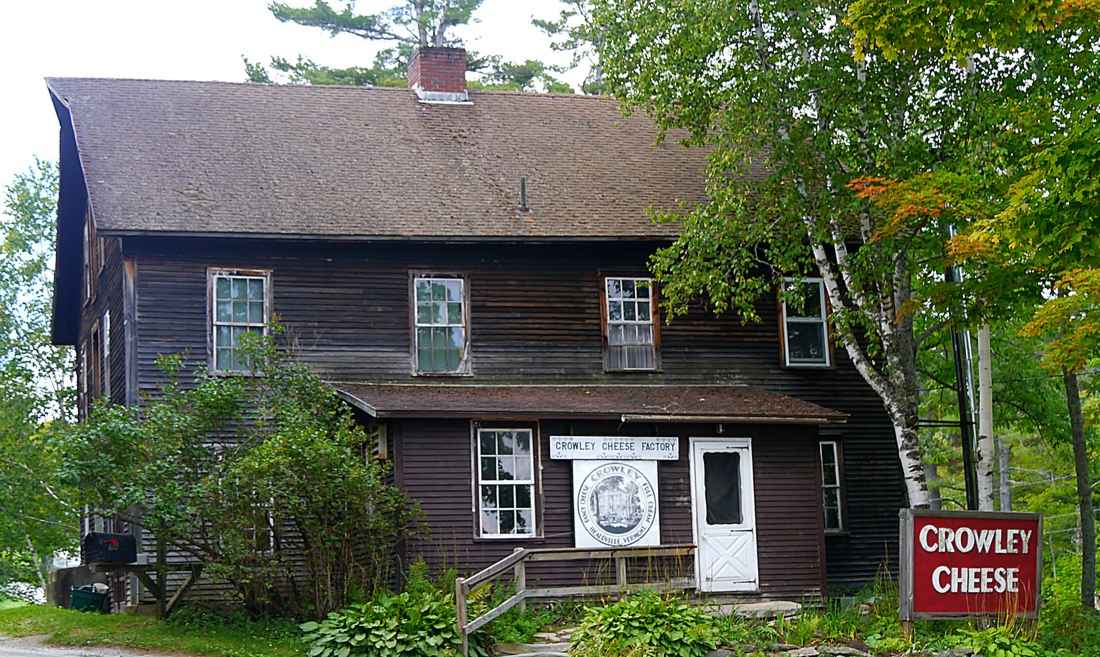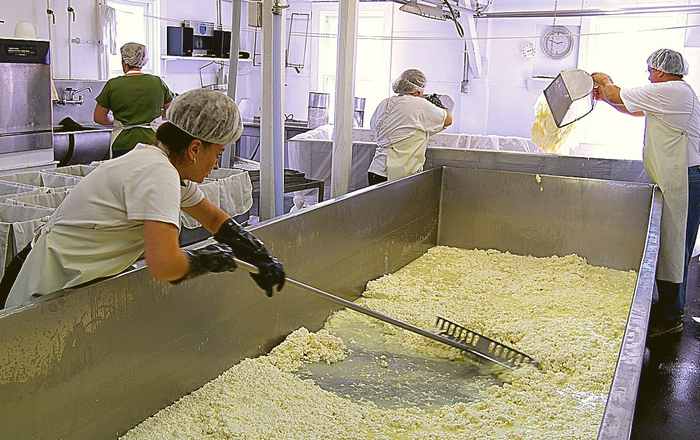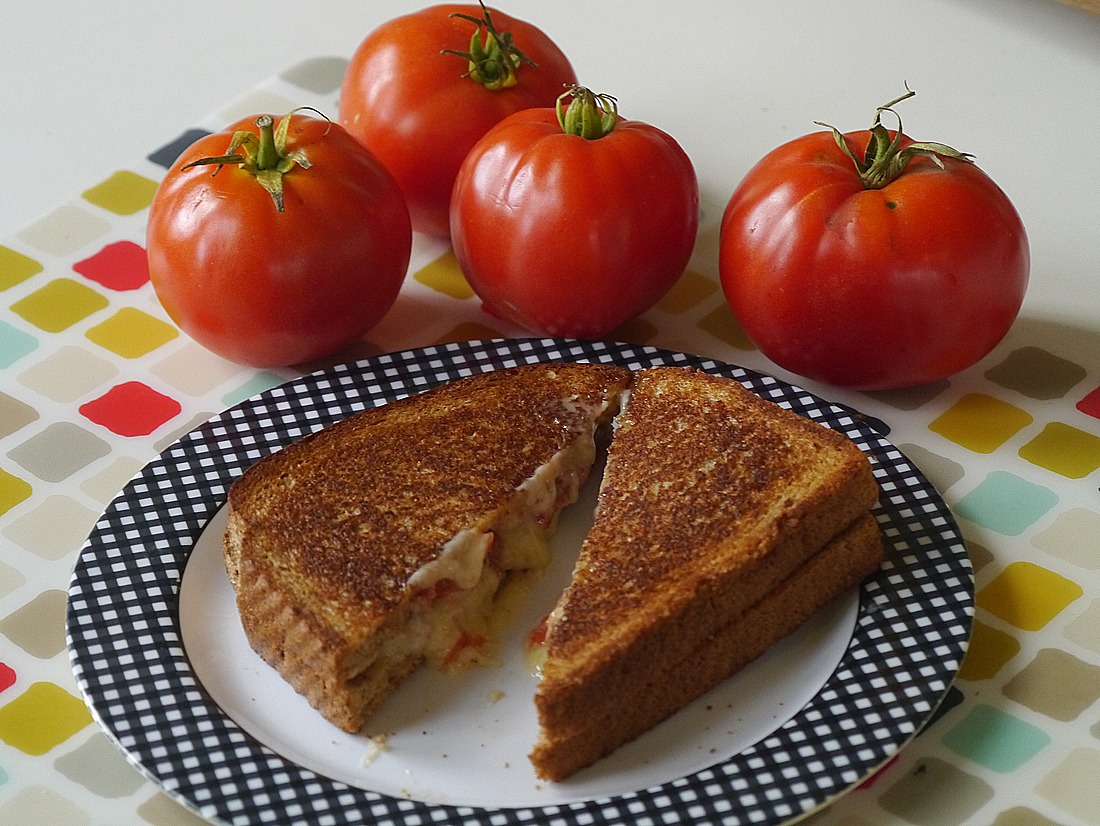
Cheesemakers always seem like magicians, using a straightforward process and a few ingredients to transform perishable milk into tasty blocks that improve with age. Here in the U.S., the folks at Crowley Cheese in Vermont (802-259-2340, www.crowleycheese.com) have been doing it longer than anyone else on record, or so they say.
 The Crowley family started selling their own cheese in 1824. In 1882, Winfield Crowley built the current factory to expand on his family’s farmhouse kitchen cheesemaking operation that used milk from their dairy herd. The factory still produces cheese with raw milk from several local herds.
The Crowley family started selling their own cheese in 1824. In 1882, Winfield Crowley built the current factory to expand on his family’s farmhouse kitchen cheesemaking operation that used milk from their dairy herd. The factory still produces cheese with raw milk from several local herds.
In the world of cheeseheads, Crowley is an “American Original.” It is a cheese with a North American pedigree that owes nothing to the old country. Never big on the fine points of taste, the Food and Drug Administration disregarded the Crowley history when it classified Crowley as a “Colby.” The Colby category was “invented” in Wisconsin in 1885, six decades after the Crowley family started making their washed-curd cheese.
The factory and sales room is open daily to visitors. It’s on Healdville Road in Healdville, a village of Mt. Holly. Fortunately, Google Maps and most GPS systems have it in their databases. The workers only make cheese a few days a week—sometimes Tuesday through Thursday, sometimes Wednesday through Friday. It’s not a process to be rushed, and takes most of the day. However, much of the time is devoted to standing around and waiting.
Making the cheese
 Early in the morning, workers pump 5,000 pounds of whole raw milk into stainless steel tubs. The cheesemaker adds lactobacillus culture (the same microbe that turns milk into yogurt) to convert the milk sugar into lactic acid. After more heating, the cheesemaker stirs in rennet. This separates cheese curds from the watery whey. As the cheese sets up, the workers cut the curd into small pieces. When it looks like popcorn and has the resiliency of a pencil eraser, they start scooping the curds into a second sink. The staff—usually the cheesemaker and two or three assistants—knead the curd while running water on it to wash away the residual acidity. After salting, the curds are packed into molds and placed in a press. By the next morning, whole wheels of cheese are formed. They are ready to be dipped in wax and aged to varying degrees of sharpness. Because Crowley lacks the acid of a cheddar, it ages much more quickly. At two years, it is as ripe as a five-year-old cheddar.
Early in the morning, workers pump 5,000 pounds of whole raw milk into stainless steel tubs. The cheesemaker adds lactobacillus culture (the same microbe that turns milk into yogurt) to convert the milk sugar into lactic acid. After more heating, the cheesemaker stirs in rennet. This separates cheese curds from the watery whey. As the cheese sets up, the workers cut the curd into small pieces. When it looks like popcorn and has the resiliency of a pencil eraser, they start scooping the curds into a second sink. The staff—usually the cheesemaker and two or three assistants—knead the curd while running water on it to wash away the residual acidity. After salting, the curds are packed into molds and placed in a press. By the next morning, whole wheels of cheese are formed. They are ready to be dipped in wax and aged to varying degrees of sharpness. Because Crowley lacks the acid of a cheddar, it ages much more quickly. At two years, it is as ripe as a five-year-old cheddar.
The sales room has lots of samples, including several flavored cheeses. (The Crowley family used to give sage-infused blocks as Christmas presents.) One of the more recent flavor additions is “muffaletta,” which contains a chopped mix of various olives. Most folks opt for the medium sharp. Those with a hankering for old-fashioned general store cheese choose the two-year-old sharp. It can be pretty tangy, but lacks the back-of-the-throat bite of a cheddar. On our last visit in September, we stumbled on a rare cache of extra-sharp. It was spectacular for the grilled cheese, chopped tomato, and crumbled bacon sandwich below. (The filling is the same as a BLT that we posted last year: hungrytravelers.com/tomatoes-meet-match-bacon-basil/.)

